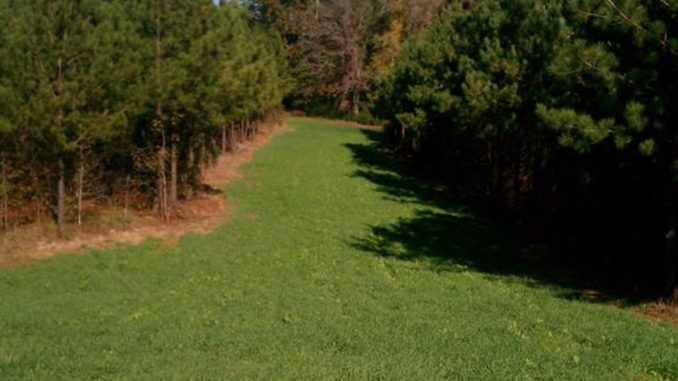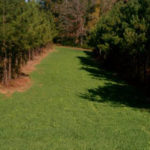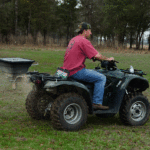
Application of nitrogen will keep things green
As the final month of the year arrives, rutting activity in the deer herd is dwindling, and a chill looms in the background. Winter foods become important to deer and other wildlife. With the rut winding down and cold weather invigorating appetites, deer will seek out dependable food sources, including those cool-season food plots planted back in late September.
Fall food plots offer deer with a very nutritious food source at just the right time, when they are yearning for rich groceries. But as the Thanksgiving feast ends, cool-season food plots begin to falter and need revitalization. While perennial cool-season crops will exhibit nutrient deficiencies, annual cool-season crops, such as brassicas, oats, wheat, rye and other small grains, are the most susceptible to nutrient depletion. The deep, green colors begin to fade, turning dull and even yellow in extreme cases.
These signs occur mainly from nitrogen deficiency, but drought can also be a factor. Lack of rainfall, especially in well-drained, sandy soils, dries out the root system directly, affecting forage production. Moisture loss in loamy and clay soils is also a problem during periods of low rainfall, but these types of soils can hold moisture longer.
Conversely, too much rainfall can lead to nutrient leaching and detrimental chemical binding. Fertilized sites on well-drained, sandy soils will lose the nitrogen and other nutrients after consecutive rain events. Heavy rains on poorly-drained sites after recent fertilization will convert nitrogen into compounds unusable to plants and possible denitrification as well.
Either way, a solution is available to revitalize food plots with annual grains. Nitrogen should be added to remedy yellowing and poor growth. Nitrogen applied as either urea (46-0-0) or ammonium nitrate (34-0-0) can have its own set of issues. Nitrogen is volatile and will leach out or convert to a gas under anaerobic conditions, quickly leaving the soil and no longer available to be used by the plants. While urea has higher nitrogen content, it is more volatile than the granular form of ammonium nitrate and should be applied at a rate of 100 pounds per acre.
As a note, if 100 pounds of nitrogen is prescribed, two 50-pound bags of ammonium nitrate (34-0-0) are only considered 34 pounds of pure, elemental nitrogen. The “34” in the “34-0-0” represents 34 percent of the volume is guaranteed as nitrogen. Therefore, just short of six 50-pound bags or 300 pounds of ammonium nitrate (34-0-0) is required to apply 100 pounds of nitrogen to the land.
Supplemental application of nitrogen will restore vigorous growth and the deep, green color representative of a healthy, growing plot. Generally, nitrogen should be added between eight and 10 weeks after planting annual crops or when problems exist from nitrogen deficiencies. Expect an immediate rebound of growth within a few days, with the potential to last for several months depending on rainfall and soil storage.






Be the first to comment